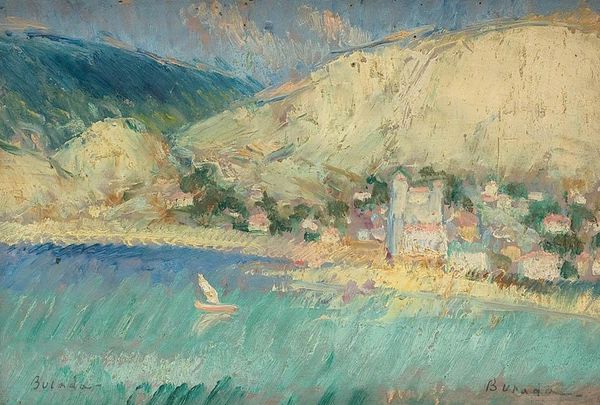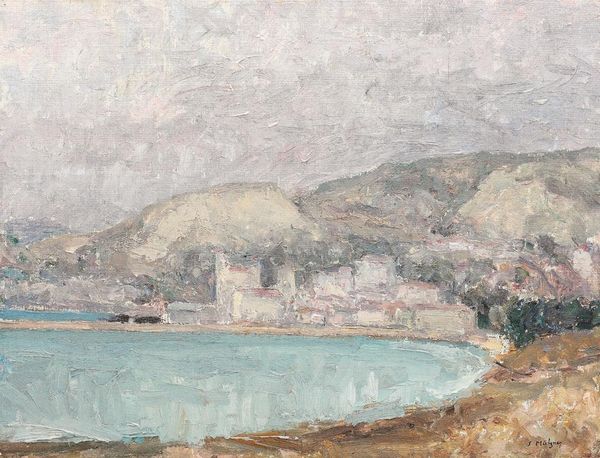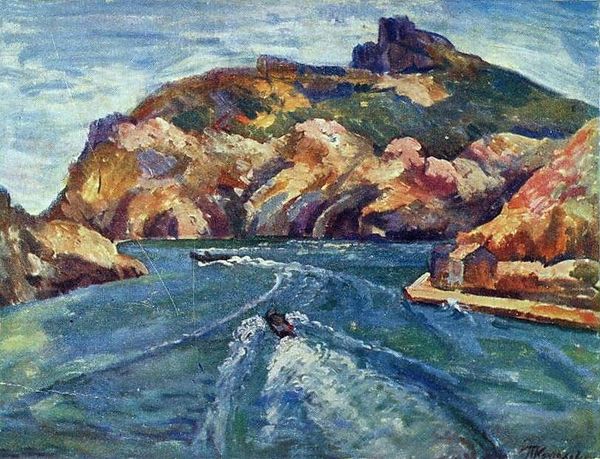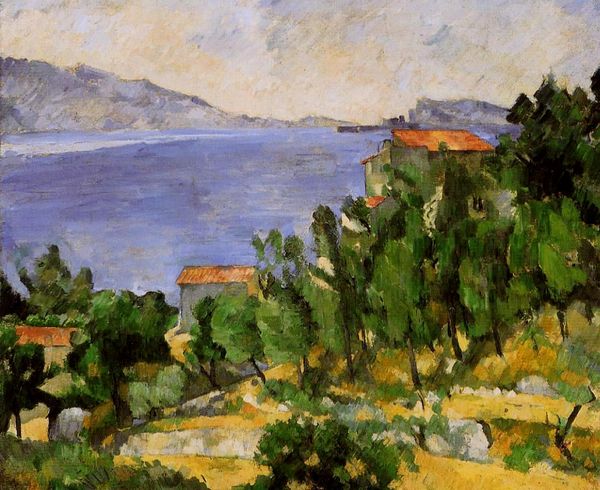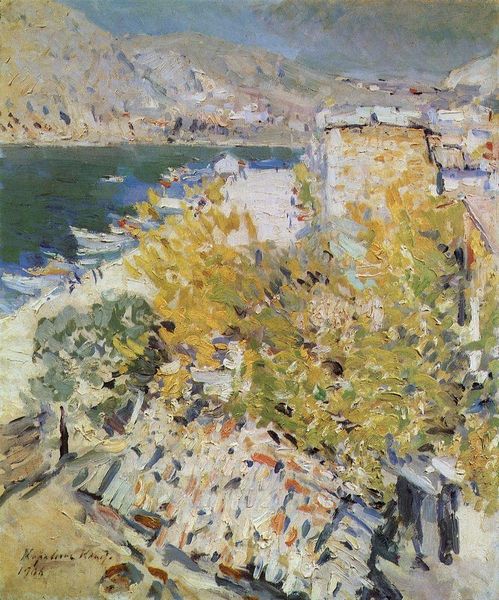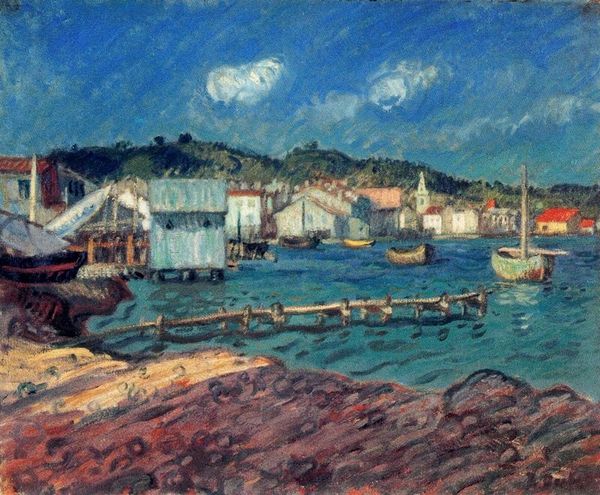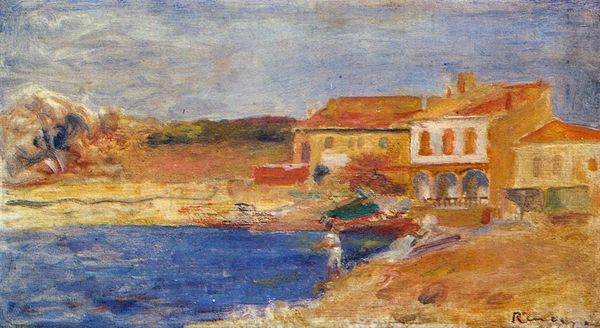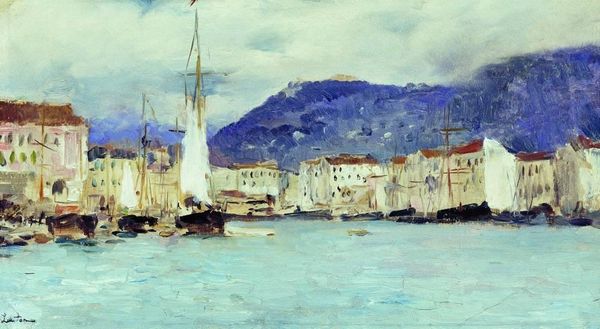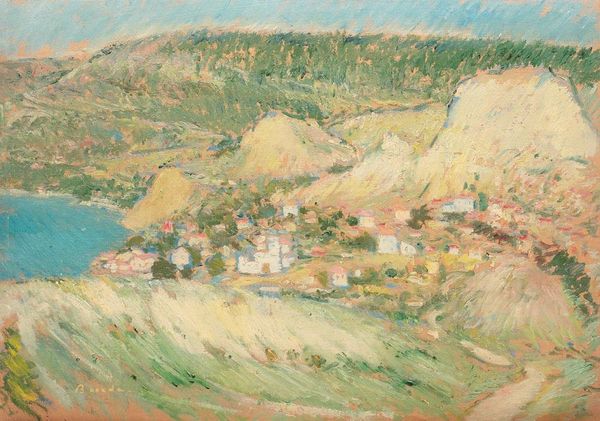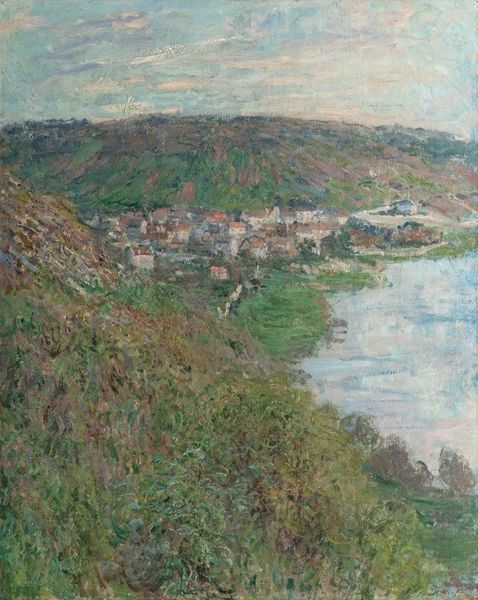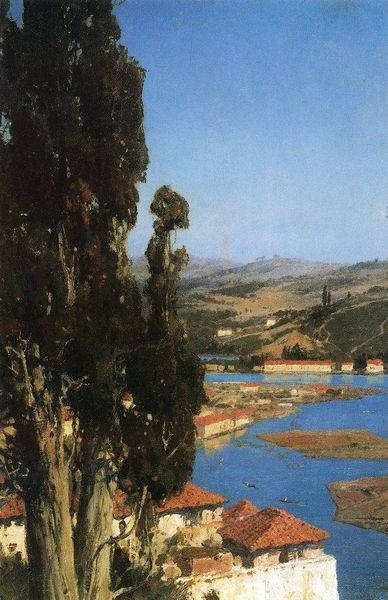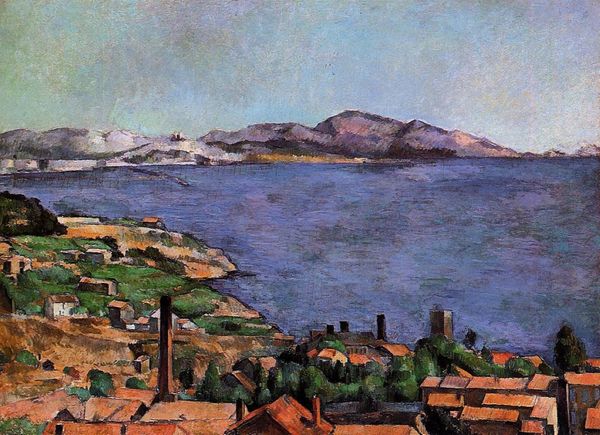
Copyright: Public domain
Editor: Levitan's "At Lake Como, Italy", painted in 1894, is a jewel of Impressionism in oil on canvas. The water, rendered in vibrant greens, immediately captures your eye. It's such a calm, almost melancholic scene. What draws your attention most when you look at this piece? Curator: This painting highlights the tension between the idealized landscape and the rapidly changing social landscape of late 19th century Europe. Lake Como, a favored destination for the European elite, became a site of leisure and privilege amid growing social inequalities. Think about the act of "plein air" painting - while appearing spontaneous, it was accessible only to certain social classes. Editor: So, you're suggesting the painting presents a curated version of reality? Curator: Exactly! While capturing a serene scene, it subtly reinforces a certain vision of beauty associated with wealth and leisure. The viewpoint is detached, observing from afar, which begs the question: who is invited to enjoy this "beautiful" vista, and who is excluded? Also, how does the institutional validation of such landscapes affect our perception of social space? Editor: That's a perspective I hadn’t considered. It complicates the appreciation, or perhaps simplifies it by recognizing historical bias! I never would have guessed all that from just looking at a landscape. Curator: Well, it reveals how even seemingly apolitical genres like landscape painting were entangled with social power dynamics. What does this suggest to you about the responsibilities of museums showcasing this type of art? Editor: To provide context and encourage critical examination! I guess beauty can be more complex than it seems. Curator: Indeed! And by exploring these complexities, we gain a deeper understanding of both the artwork and the world it reflects.
Comments
No comments
Be the first to comment and join the conversation on the ultimate creative platform.
